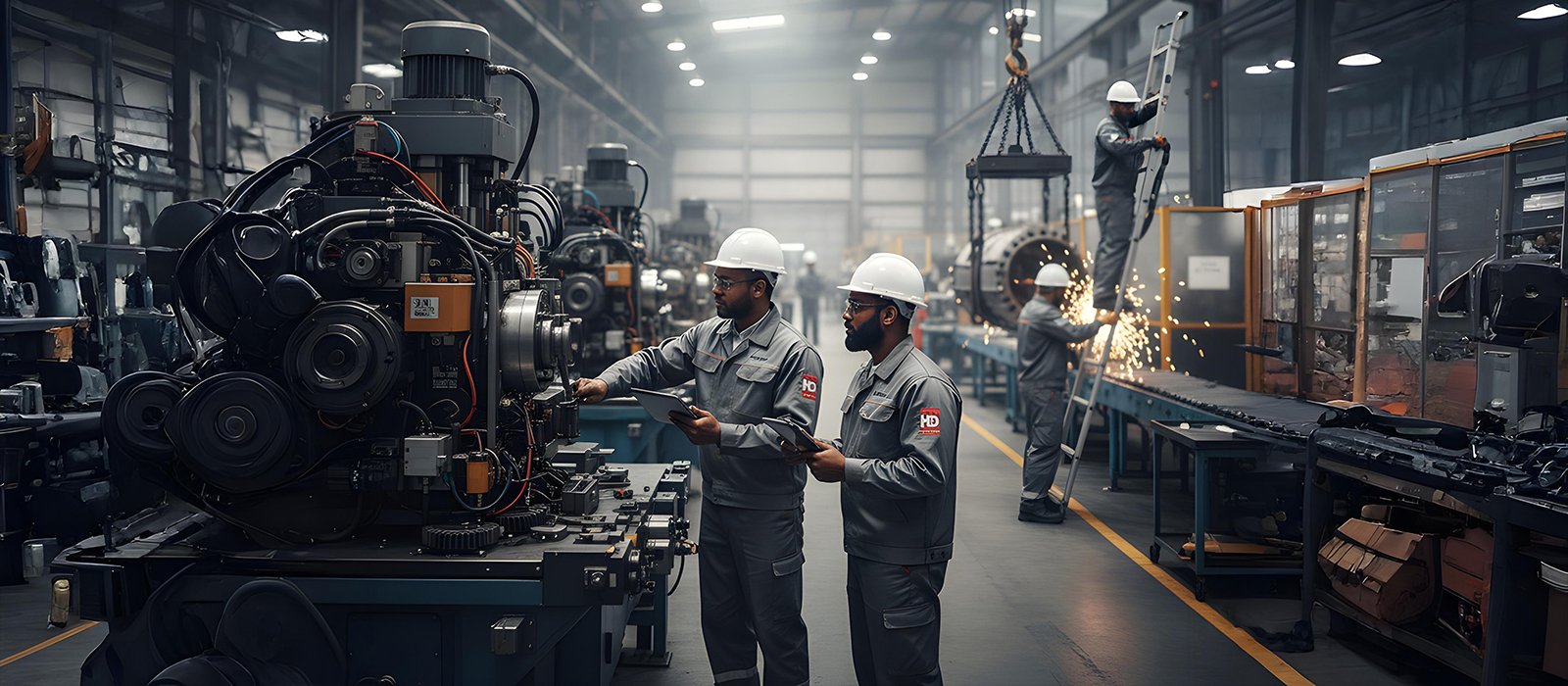Every manufacturer faces the same costly question sooner or later: Should we repair or replace this equipment?
These unexpected failures result in stopped production, reduced profit, and increased expenses for maintenance. The wrong choice can result in either huge budget depletion or definite repeated failures.
At HD Industries, we help clients make smart, data-driven maintenance decisions that balance cost, performance, and reliability. Here’s how to know when to repair – and when it’s time to replace.
1. Assess the Age and Condition of the Equipment
The first factor to determine is age. Most industrial machines have predictable life spans, which are generally 10 to 20 years depending on use and maintenance.
If your machine is nearing the end of its expected service life or repair costs are accumulating, replacement might be more economical long-term. However, well-maintained equipment that continues to perform efficiently may require mere component repair or reconditioning.
2. Calculate the Total Cost of Ownership (TCO)
Don’t just focus on the immediate repair bill. Consider total cost of ownership: downtime, lost productivity, and energy inefficiency.
It is usually worth doing when repairs will restore full efficiency and extend life expectancy, but when recurring maintenance costs exceed 50 percent of the price of a new machine, it may be time to think about replacement.
HD Industries helps clients perform a TCO analysis to identify which option maximizes ROI.
3. Downtime: The Hidden Cost
Every hour of downtime affects revenue. A lengthy repair may seem cheaper, but if it disrupts production for days, those hidden costs quickly add up.
With modern replacement machinery, the output and automation are often much greater, offsetting the investment cost. On-site repair services offered by HD Industries minimize your downtime and keep your operation running smoothly.
4. Availability of Parts and Support
Older machines are often plagued by obsolete components. Parts that are hard to find, or very expensive, may make replacement the practical solution.
HD Industries collaborates with reliable suppliers to supply hard-to-find components, but when a system is beyond economical repair, we will recommend a modern, efficient alternative.
5. Energy Efficiency and Modern Technology
Newer machines are energy-efficient, designed for precision automation. Improved machinery reduces the long-term cost of power and potentially increases product quality.
However, a repair-and-upgrade strategy may be best if your existing machinery can be retrofitted with newer controls or more energy-efficient components.
Conclusion
Whether to repair or replace industrial equipment is never a black-and-white decision; rather, it’s a balancing act among cost, performance, and productivity.
At HD Industries, our professionals assess every situation with precision diagnostics and straight forward recommendations. Through expert repairs or upgrading your equipment, we help you minimize downtimes and maximize value.


Add a Comment